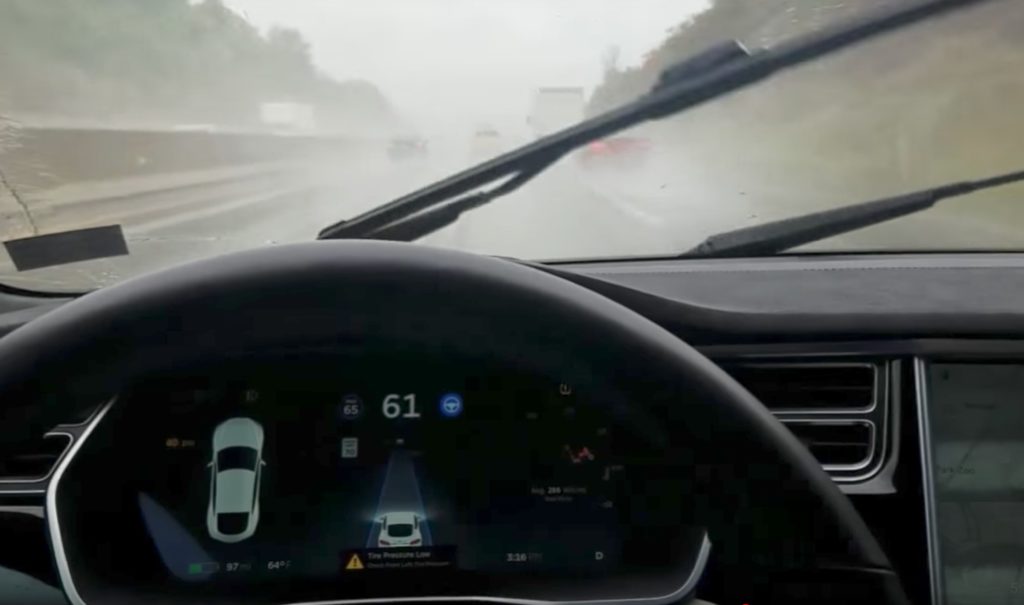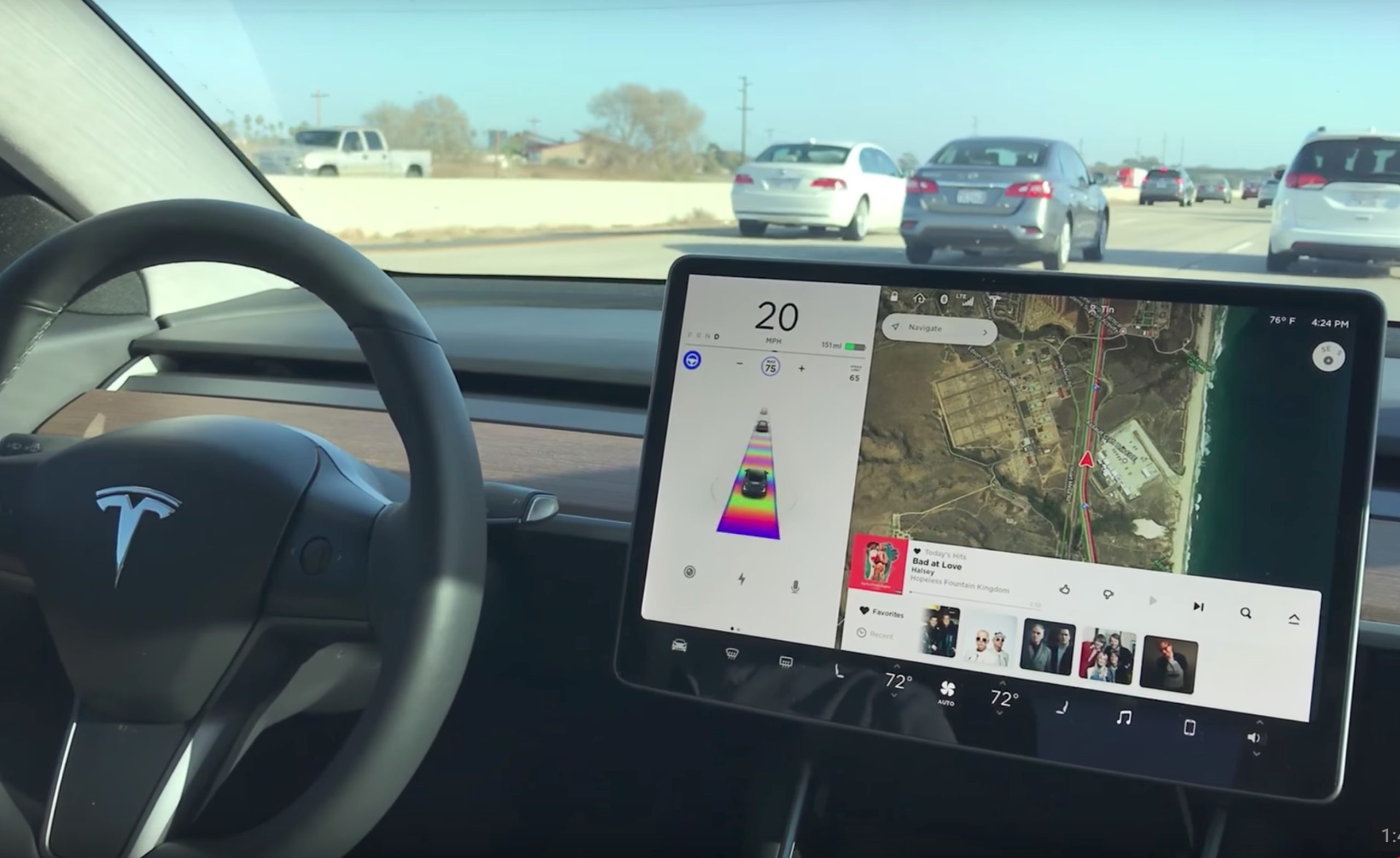
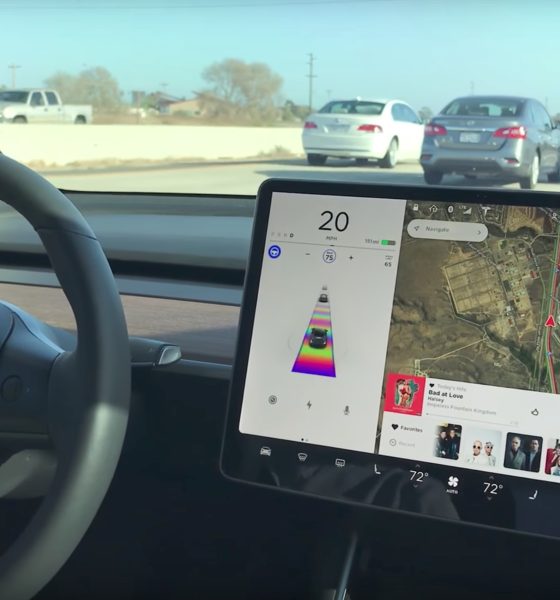
News
Elon Musk explains the delay for Tesla’s autonomous coast-to-coast trip
Elon Musk has finally explained why the company ultimately delayed its 2017 plan for a coast-to-coast autonomous drive, and why he stands firm on Tesla’s three-pronged Autopilot approach for full self-driving over LiDAR technology.
During the Q&A portion of Tesla’s Q4 earnings call, Romit Jitendra Shah of Nomura Instinet asked Musk for any updates on the company’s plans for a fully autonomous coast-to-coast drive. Responding to the inquiry, the Musk explained that Tesla is focused on developing a full self-driving suite that would work on all roads under any conditions — something that would have been compromised had Tesla forced the feat last year.
“We could have done the coast-to-coast drive, but it would have required too much specialized code to effectively game it or make it somewhat brittle and that it would work for one particular route, but not the general solution. So I think we would be able to repeat it, but if it’s just not any other route, which is not really a true solution,” Musk said.
When asked about the timeline for the coast-to-coast autonomous drive, the Tesla CEO stated that it might happen in three months, or “six months at the outside.” Musk further stated that the feature would be available for Model S, X, and 3 customers who purchased the Full Self-Driving (FSD) upgrade for their vehicles. The CEO did not confirm, however, if the feature would be rolled out to customers immediately after the coast-to-coast drive is accomplished, or if customers would have to wait before being able to access the feature.
Perhaps the most interesting part of Musk’s statements about FSD, however, came from David Tamberrino of Goldman Sachs. During the Q&A session, Tamberrino asked Musk about his comments on LiDAR technology, a particularly prominent feature of Tesla’s rivals in the self-driving field. Responding to the inquiry, Musk was firm in his stance that LiDAR is not needed for Tesla’s vehicles to achieve fully autonomous driving, even going so far as to state that rivals being dependent on the technology might be making a grave mistake.
“In my view, it is a crutch that will drive companies to a local maximum that they will find very difficult to get out of. They’re going to have a whole bunch of expensive equipment, most of which makes the car expensive, ugly and unnecessary. And I think they will find themselves at a competitive disadvantage,”
Musk further explained that utilizing sophisticated radar equipment is a far better option for FSD. Tesla is steadfast in using its three-pronged approach featuring redundant forward cameras, forward radar, and near-field ultrasonics will be key to the eventual mastery of autonomous driving.
Musk reaffirmed his stance on using this technology, as it allows vehicles to “see” through snow, rain, dust, and fog — conditions that even experienced drivers find difficult to drive on. Overall, Musk stated that he is optimistic about the development of Tesla’s autonomous driving suite. While Tesla’s CEO admitted that progress has been slow, he asserted that when the company achieves FSD, it would be something truly remarkable.
“It’s also one of those things that’s kind of exponential where it doesn’t seem like much progress, and suddenly, ‘wow.’ It will seem like well this is a lame driver. (Then,) like okay, that’s a pretty good driver. (Then,) like holy cow, this driver’s good,” Musk said.
It’s worth noting that Musk also stated that his beliefs in FSD, LiDAR, and radar technology might be proven wrong in the future. Musk did assert, however, that he is confident in his belief that Tesla’s non-LiDAR approach is the correct way to go.
Now perhaps I am wrong. In which case, I’ll look like a fool. But I am quite certain that I am not,” Musk said.
In a lot of ways, Musk’s statements about LiDAR and the delayed autonomous coast-to-coast drive makes perfect sense. As we noted in a previous report, Tesla’s focus on FSD technology is quite different than its competitors, in the way that the company is attempting to create a system that works under any conditions in any location. The leaders in the field, such as Waymo and GM, on the other hand, are pursuing something different, creating a system that works perfectly in a pre-programmed, set route.

News
Tesla Model X lost 400 pounds thanks to these changes
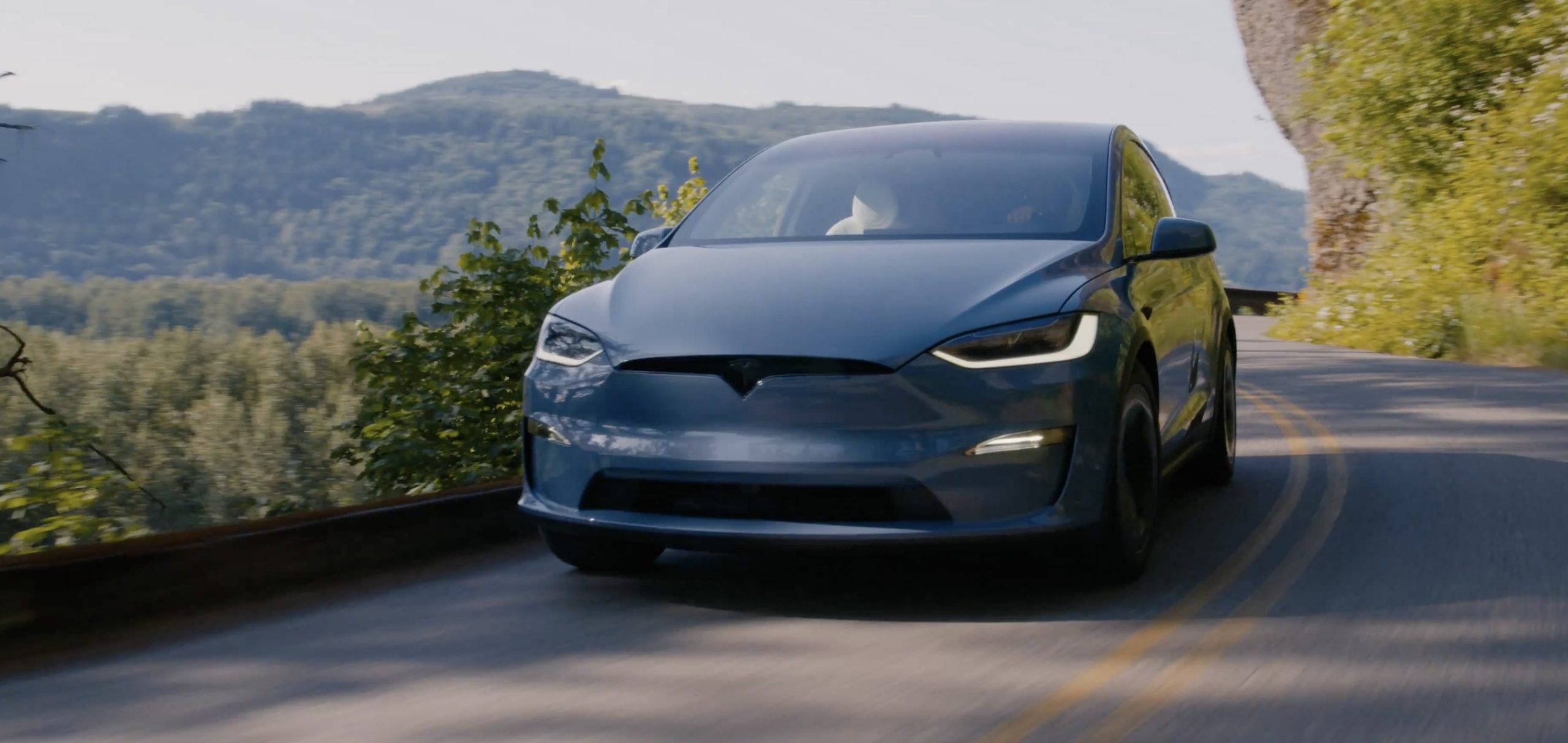
The Tesla Model X has always been one of the company’s most loved vehicles, despite its low sales figures, which can be attributed to its high price tag.
However, the Model X has been a signature item on Tesla’s menu of cars, most notably recognized by its Falcon Wing Doors, which are aware of its surroundings and open according to what’s around it.
But recent improvements to the Model X were looking slim to none, but it appears most of the fixes actually happened under the body, at least according to Tesla’s Vice President of Powertrain, Lars Moravy.
In a recent interview with Car and Driver, Moravy detailed all of the changes to the 2026 iteration of the vehicle, which was about 400 pounds lighter than it was originally. The biggest change is a modification with the rear motor, switching from an induction-type motor to a permanent-magnet design and optimizing the half-shafts, which shed about 100 pounds.
Tesla also got “almost 80 pounds out of the interior bits and pieces,” which “included making parts thinner, different manufacturing process choices, and incorporating airbag-deployment requirements into the headliner fabric,” the report said.
Additionally, the standard five-passenger, bench seat configuration saved 50 pounds by ditching pedestal mounting. This also helped with practicality, as it helped the seat fold flat. Engineers at Tesla also saved 44 pounds from the high-voltage wiring through optimizing the wiring from the charge-port DC/DC converter and switching from copper to aluminum wiring.
Tesla makes a decision on the future of its flagship Model S and Model X
Tesla also simplified the cooling system by reducing the number of radiators. It also incorporated Nürburgring cooling requirements for the Plaid variant, which saved nearly 30 pounds.
Many Tesla fans will be familiar with the megacastings, manufactured in-house by presses from IDRA, which also saves more than 20 pounds and boosts torsional stiffness by around 10 percent. Tweaks to the suspension also saved 10 pounds.
People were truly disappointed with what Tesla did with the Model S and Model X, arguing that the cars needed a more severe exterior overhaul, which might be true. However, Tesla really did a lot to reduce the weight of the vehicle, which helps increase range and efficiency. According to Grok, every 200 pounds removed adds between 7 and 15 percent to range estimations.
This makes sense considering the range estimations both increased by 7 percent from the Model X’s 2025 configuration to the 2026 builds. Range increased on the All-Wheel-Drive trim from 329 miles to 352 miles, while the Plaid went from 314 miles to 335 miles.
News
Tesla launches its new branded Supercharger for Business with first active station
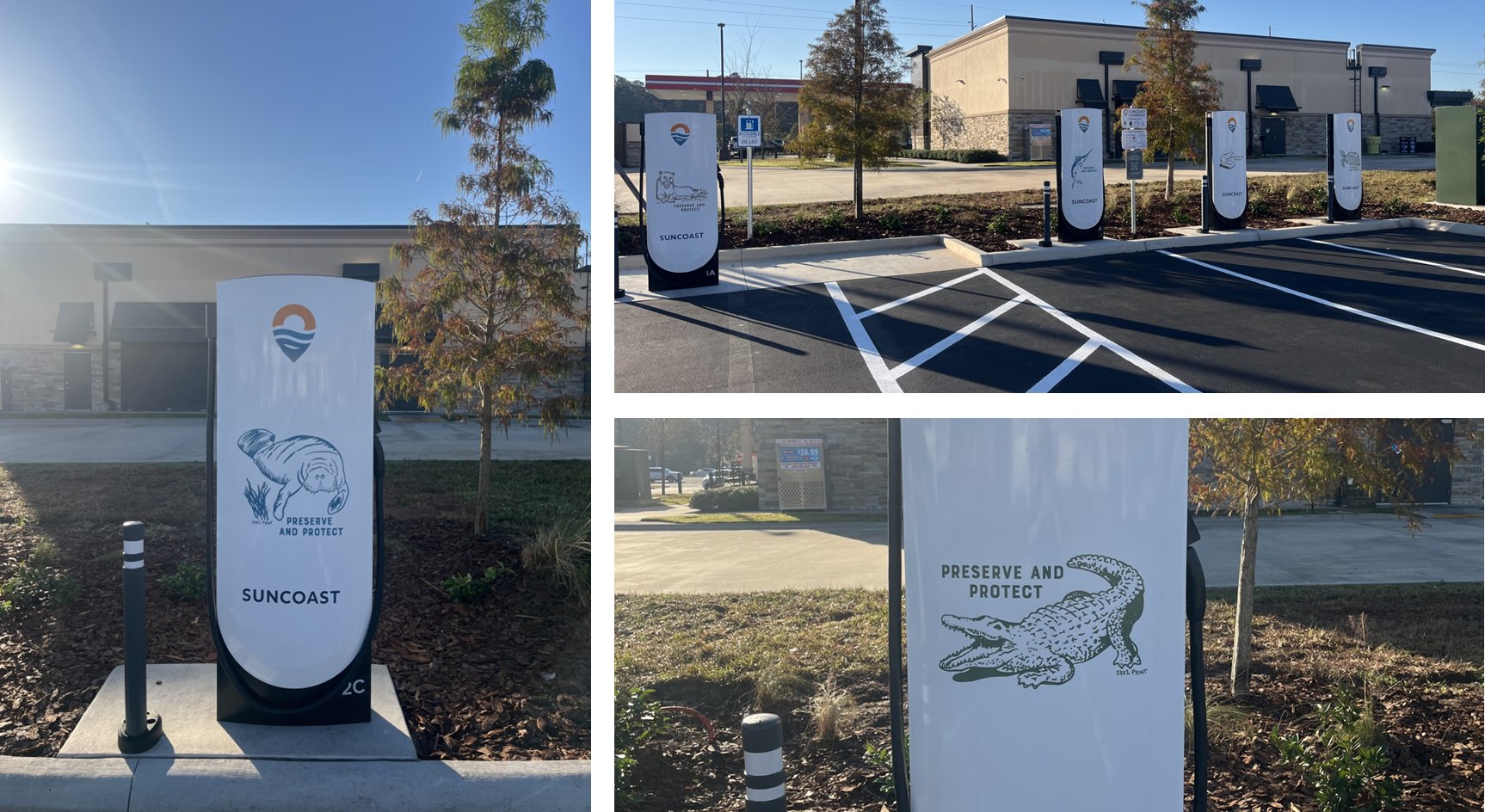
Tesla has officially launched its first branded Supercharger just months after initiating a new program that allows third-party companies to brand their own charging piles.
The site opened in Land O’ Lakes, Florida, and features eight V4 Supercharging stalls offering up to 325 kW of charging speed. It appears it was purchased by a company called Suncoast Credit Union. This particular branch is located Northeast of Tampa, which is on the Gulf of Mexico.
It features graphics of Florida animals, like alligators:
Here’s a video of the graphics being installed on the Tesla Superchargers at this site: https://t.co/oIfEPNZjAH pic.twitter.com/ENWakZ2qT9
— TESLARATI (@Teslarati) November 20, 2025
Tesla launched this program back in September, and it basically was a way to expand its Supercharger presence and also allow companies to pay for the infrastructure. Tesla maintains it. When it announced the “Supercharger for Business,” it said:
“Purchase and install Superchargers at your business. Superchargers are compatible with all electric vehicles, bringing EV drivers to your business by offering convenient, reliable charging.”
The program does a few things. Initially, it expands EV charging infrastructure and makes charging solutions more readily available for drivers. It can also attract people to those businesses specifically.
Tesla launches new Supercharger program that business owners will love
The chargers can also be branded with any logo that the business chooses, which makes them more personalized and also acts as an advertisement.
The best part is that the customers do not have to maintain anything about the Supercharger. Tesla still takes care of it and resolves any issues:
“We treat your site like we treat our sites. By providing you with a full-service package that includes network operations, preventative maintenance, and driver support, we’re able to guarantee 97% uptime–the highest in the industry.”
It appears the Superchargers will also appear within the in-car nav during routing, so they’ll be publicly available to anyone who needs to use them. They are still available to all EVs that have worked with Tesla to utilize its infrastructure, and they are not restricted to people who are only visiting the business.
Cybertruck
Tesla reveals its Cybertruck light bar installation fix
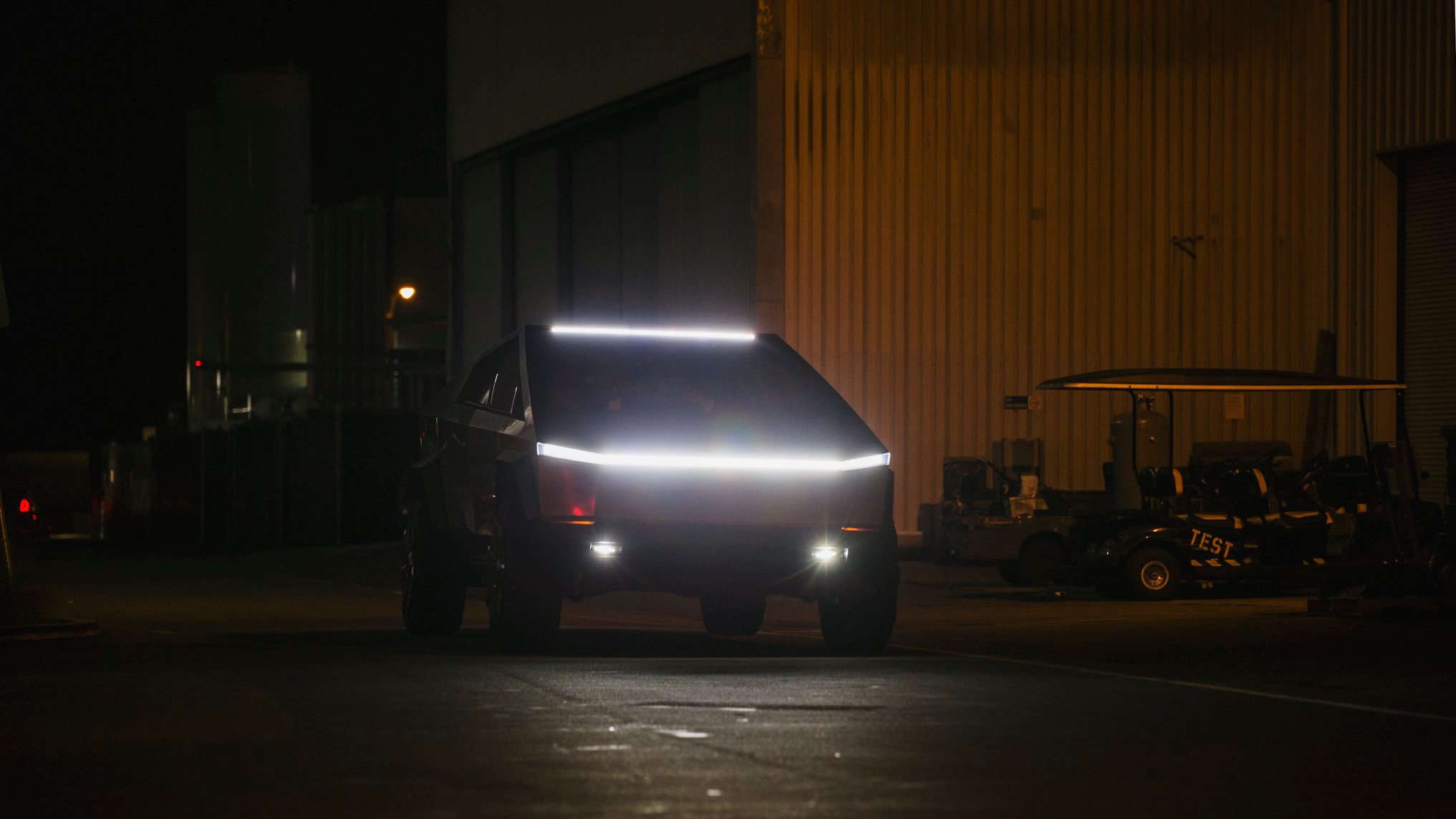
Tesla has revealed its Cybertruck light bar installation fix after a recall exposed a serious issue with the accessory.
Tesla and the National Highway Traffic Safety Administration (NHTSA) initiated a recall of 6,197 Cybertrucks back in October to resolve an issue with the Cybertruck light bar accessory. It was an issue with the adhesive that was provided by a Romanian company called Hella Romania S.R.L.
Tesla recalls 6,197 Cybertrucks for light bar adhesive issue
The issue was with the primer quality, as the recall report from the NHTSA had stated the light bar had “inadvertently attached to the windshield using the incorrect surface primer.”
Instead of trying to adhere the light bar to the Cybertruck with an adhesive, Tesla is now going to attach it with a bracketing system, which will physically mount it to the vehicle instead of relying on adhesive strips or glue.
Tesla outlines this in its new Service Bulletin, labeled SB-25-90-001, (spotted by Not a Tesla App) where it shows the light bar will be remounted more securely:
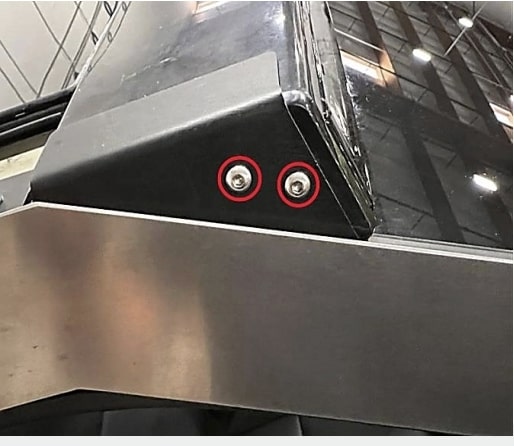
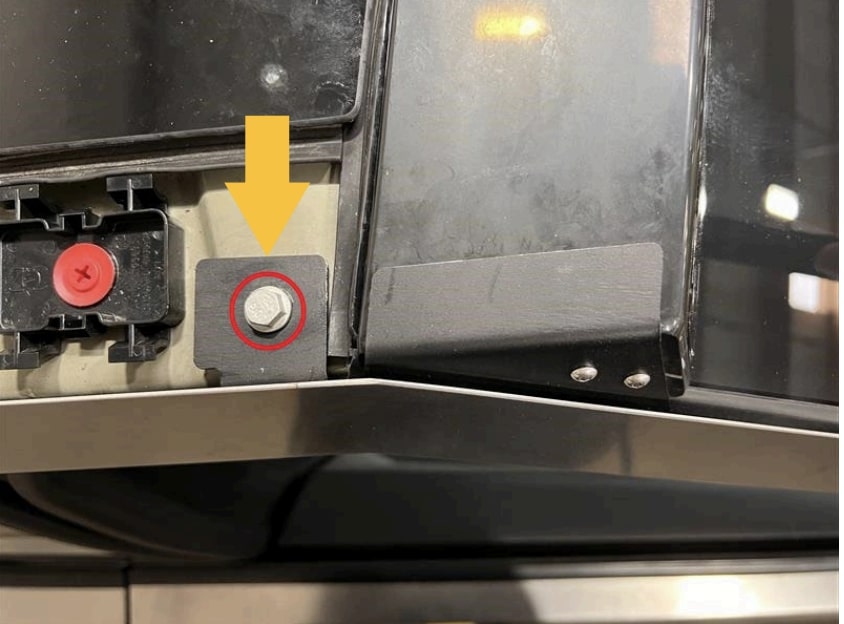
The entire process will take a few hours, but it can be completed by the Mobile Service techs, so if you have a Cybertruck that needs a light bar adjustment, it can be done without taking the vehicle to the Service Center for repair.
However, the repair will only happen if there is no delamination or damage present; then Tesla could “retrofit the service-installed optional off-road light bar accessory with a positive mechanical attachment.”
The company said it would repair the light bar at no charge to customers. The light bar issue was one that did not result in any accidents or injuries, according to the NHTSA’s report.
This was the third recall on Cybertruck this year, as one was highlighted in March for exterior trim panels detaching during operation. Another had to do with front parking lights being too bright, which was fixed with an Over-the-Air update last month.
